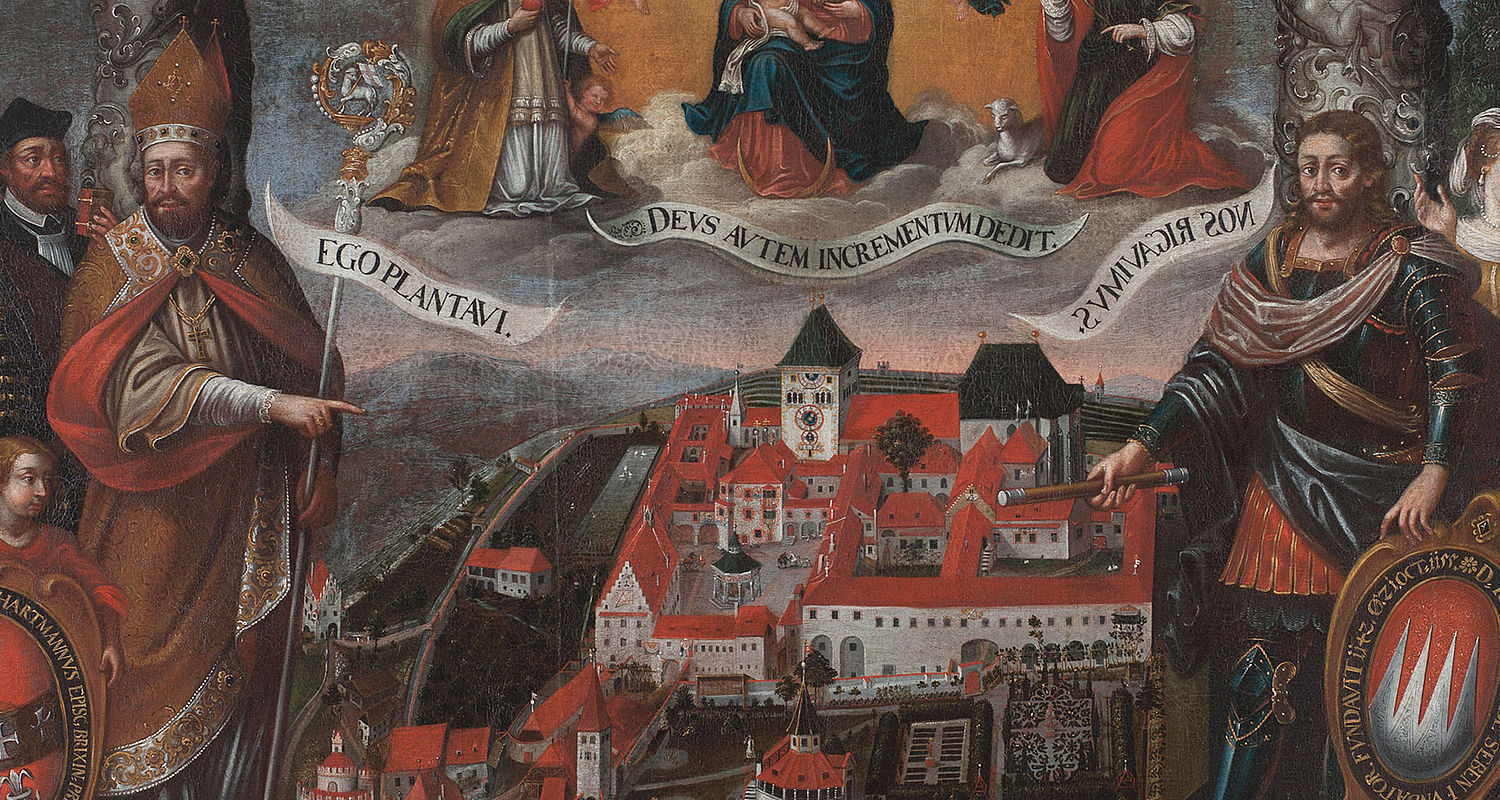You are using an outdated browser. To have the best experience use one of the following browsers:

-
1142
Foundation of the abbey
The founder of the abbey was the Blessed Bishop Hartmann of Brixen.
Fate played a hand in the origination of Neustift Abbey. After the death of their son, Burgrave von Säben and his wife donated land and farms. This enabled Bishop Hartmann to found the abbey, and he himself donated the parish of Natz.
-
1143
Papal privileges
Pope Innocence II granted privileges to Neustift.
In 1143 Pope Innocence II issued an edict of confirmation and protection for Neustift. It included permission to bury persons who were not members of the abbey community. This was a source of income, as in those days people believed that a grave in an abbey ensured a faster passage to heaven.
-
1157
Under imperial protection
Friedrich I, an important ally for Neustift.
Bishop Hartmann’s position as a powerful and influential advocate for Neustift was demonstrated in 1157, when Emperor Friedrich I Barbarossa, for whom Hartmann acted as adviser and confessor, confirmed the rights and property of the abbey.
-
1160
A new parish for the abbey
Kiens parish was acquired in addition to the parish of Natz.
The growing importance of the new Augustinian abbey was also reflected by the expansion of its area of responsibility. Thus in 1160 Bishop Hartmann also gave the canons the parish of Kiens.
-
1190
Consumed by fire
The entire abbey burned to the ground in a devastating fire.
There is no longer any record of what the first abbey complex looked like. In 1190 it was destroyed by fire. A new complex was then built in the Romanesque style, the basic features of which have been preserved to this day.
-
1221
The ever-growing abbey
Further additions were made to the original property.
Thanks to numerous endowments and donations, the abbey was soon able to establish itself as a religious and cultural centre which exerted an influence far beyond the abbey walls. In 1221 Neustift acquired the patronage rights to the parish of Olang.
-
1257
… and a further parish
The Neustift canons were now responsible for Völs am Schlern.
The Augustinian abbey continued to grow. In 1257 the parish of Völs am Schlern was incorporated.
-
1261
A foothold in East Tyrol
From 1261 the parish of Assling also belonged to Neustift.
In 1261 Neustift expanded its pastoral responsibilities to East Tyrol when the archbishops of Salzburg gave the abbey the parish of Assling.
-
1485
The Late Gothic era in Neustift
An artistic heyday
Neustift reached the peak of its artistic development in the Late Gothic era. In 1485 the church’s new choir was consecrated. The most important Tyrolean artists, including Michael Pacher, furnished the church with winged altars. Magnificently illustrated manuscripts were produced in the scriptorium.
-
1525
The plundering of the abbey
Even the abbey was not spared by the peasant uprising.
In May 1525 outraged peasants under the leadership of Michael Gaismair attacked the abbey. While they primarily destroyed rent rolls and certificates of debt, they also plundered the canons’ halls and the cellar, leaving a wake of devastation at Neustift.
-
1630
New vineyards for the abbey
A first step in the direction of quality
Because the harsh climate of Eisacktal did not provide the right conditions for wine-growing (and probably also resulted in sour wines), in around 1630 Neustift acquired several vineyards south-west of Bozen and built the farm of Mariaheim. It was the monastery’s first step in the direction of quality wines.
-
1775
A new home for the knowledge of the world
The creation of the Baroque library hall.
Between 1770 and 1775 Prelate Leopold von Zanna had a new representative hall built for the abbey library. With its gilded Rococo stucco-work, it is one of the most beautiful library halls in the south German region.
-
1807
A (provisional) end
Neustift was dissolved by the kingdom of Bavaria.
In 1805 Tyrol was given to the kingdom of Bavaria, which dissolved all the Tyrolean abbeys in 1807 – including Neustift. The Bavarians plundered the abbey and carted off tons of books and works of art – also the important Church Fathers’ Altar by Michael Pacher.
-
1816
And a revival …
In 1816 Neustift was re-established.
After Tyrol went back to Austria, in 1816 Neustift was re-established through an imperial edict – and assigned (even) more educational responsibilities. In addition to the abbey’s own middle school, the canons thus took over the only grammar school in Brixen.
-
1907
In the network
Formation of the Austrian Congregation
In1907 Neustift combined with five other abbeys to form the Congregation of the Augustinian Canons. The individual abbeys are independent of their diocesan bishop.
-
2021/22
Old walls, new attractions
More space for the abbey museum and a new discovery
The abbey never stands still. In May 2021 a new wing of the museum was opened in the former coach house. In the anteroom of the library hall, wall paintings from around 1775/80 showing everyday scenes from China were uncovered.
